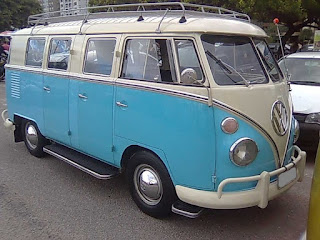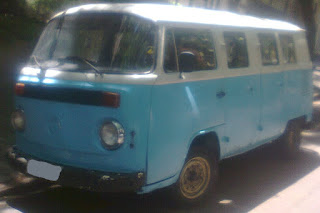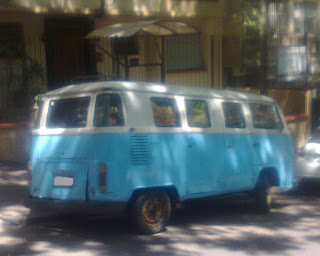I'm not really so excited about hybrid cars, but there's something about them that really caught my attention recently. Since the main motivations that have driven some people toward the hybrids were expectations of an increased fuel-efficiency and lower emissions, why did some strategies on their way to become mainstream for non-hybrids such as turbocharging and direct injection not find their way into most of the hybrids out there? Maybe we could take a look at the Ford Fusion and its European equivalent, the Mondeo, since the engine options for them has so many distinct options even though not all of them but the gasoline-powered 2.0L Ecoboost seem to be available throughout all the markets where it's available, either badged as Fusion or Mondeo. There is a 3-cyl 1.0L Ecoboost catering mostly to Europe, a 4-cyl 1.5L Ecoboost which finds its way nearly everywhere but South America, the above-mentioned 2.0L Ecoboost, and a recently-introduced 2.7L V6 Ecoboost for North American markets, all of them gasoline-powered and fitted with turbocharger and direct injection. The only naturally-aspirated engines available are the 2.5L Duratec in gasoline and flexfuel gasoline/ethanol versions and the 2.0L Duratec in a gasoline-powered version fitted to the hybrid versions of the Fusion for the Americas and the Mondeo for Europe, both using a regular sequential, indirect, port-injection. Regarding the 2.5L which is actually meant as an entry-level engine in spite of its displacement that would make it liable to higher taxes in some markets and tollerates better some lower-grade fuels the port-injection is not so pointless at all, but when it comes to the hybrid wasn't it at least supposed to benefit from the new trends that have been improving the fuel-efficiency of non-hybrids? In real-world conditions it doesn't seem so accurate at all...
A pratical advantage of a turbocharged engine that would benefit people who use their vehicles in locations above the mean sea level is their lower performance loss at higher altitudes, whereas a naturally-aspirated hybrid wouldn't be initially supposed to provide some sort of altitude compensation. However, the combined output of both the internal-combustion engine and the electric motor is usually lower than the numerical sum of their individual power and torque figures, and can set automatically to a higher proportion of the electric power in such conditions while the gasoline-powered engine would still be able to drive the on-board generator even at a lower power due to the lower concentration of oxygen in the air at the lower pressure associated to a higher altitude. With the vehicle motion starting in electric mode by default, the driver is probably not going to even notice such a difference in performance regardless if it's on the beach or in the mountains. On the other hand, the port-injection in conjunction to the "Atkinson effect" provided by a longer intake valve timing can actually provide some mild enhancement to the density of the mass air flow and therefore increase its oxygen concentration. The intake valve timing duration extending into the beginning of the compression stroke, in order to make it effectively shorter than the power stroke, leaves some air/fuel mix to return to the intake manifold where the gasoline vapours are going to cool the charge air much like an intercooler would do in a turbocharged engine. There is also a reduction in the effective compression ratio which, by its way, decreases the aerodynamic heating inside the combustion chambers and therefore leads to a lower amount of Nitrogen Oxides (NOx) being generated. Since the gasoline also vapourizes more accurately than in a direct-injection which has the gasoline atomized into droplets but still in liquid phase, the surface area in contact with the oxygen in the air is increased, leading to a more complete combustion. Oily vapours admitted through the positive crankcase ventilation are also dilluted more effectively by the gasoline when it's port-injected instead of directly-injected, becoming also easier to burn accurately, which seems to match the "sustainability" approach surrouding the hybrid car market.
Tuesday, July 12, 2016
Friday, July 01, 2016
Kombi Lotação: a Brazilian-exclusive version with 6 front-hinged doors
It's not unusual for people who never went to Brazil to rely on misconceptions about local variants of the classic air-cooled Volkswagen models, such as the Transporter which is more known locally just as "Kombi" regardless of version, including the pick-ups and panel vans. Some even presume that this 6-door version known as "lotação" (Brazilian Portuguese for "jitney", "share-taxi" or "marshrutka") was the rule instead of an exception. Well, while having all the doors hinged upfront, and even some offside passenger doors, became a desirable feature for the share-taxi service, it would actually become unfavorable to load or unload bulky objects when the vehicle had the rear seat rows removed and was used to haul cargo. Therefore, the Kombi Lotação had quite a limited market share compared to the regular model fitted with the split curbside door.
The 6-door "lotação" trim lasted until early-'80s when the Brazilian Kombi had already undergone the facelift that led to the introduction of the single-piece windshield and started to become outfavored by municipal administrations that started pushing minibuses as the standard for the share-taxi service. A T2b "bay-window" Kombi Lotação, since is less sought after by collectors, might have become even rarer than a split-window by now. It was quite a surprise for me to spot this '77-'78 one in my neighborhood a few months ago, currently used by a construction contractor. It was quite derelict, missing some door handles and the running boards, but still working.
The 6-door "lotação" trim lasted until early-'80s when the Brazilian Kombi had already undergone the facelift that led to the introduction of the single-piece windshield and started to become outfavored by municipal administrations that started pushing minibuses as the standard for the share-taxi service. A T2b "bay-window" Kombi Lotação, since is less sought after by collectors, might have become even rarer than a split-window by now. It was quite a surprise for me to spot this '77-'78 one in my neighborhood a few months ago, currently used by a construction contractor. It was quite derelict, missing some door handles and the running boards, but still working.
Subscribe to:
Comments (Atom)






